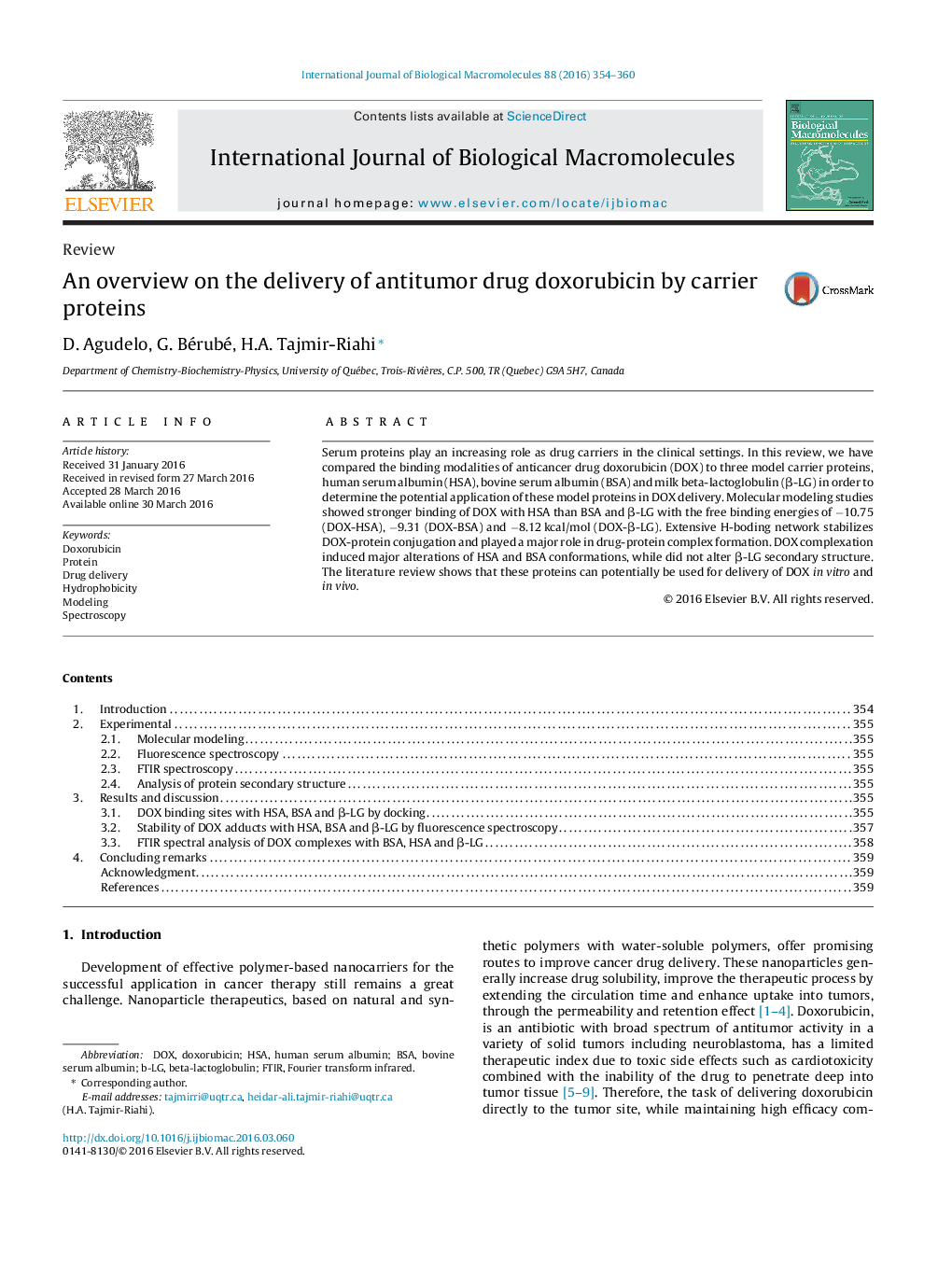| Article ID | Journal | Published Year | Pages | File Type |
|---|---|---|---|---|
| 1986132 | International Journal of Biological Macromolecules | 2016 | 7 Pages |
•Structural aspects of doxorubicin conjugation with HSA, BSA and beta-LG are reviewed here.•HSA forms stronger drug conjugate than BSA and beta-LG.•Hydrophobicity plays a major role in DOX-protein conjugation.•H-bonding is the major contact in DOX-protein interactions.•Serum proteins can be used as DOX delivery system.
Serum proteins play an increasing role as drug carriers in the clinical settings. In this review, we have compared the binding modalities of anticancer drug doxorubicin (DOX) to three model carrier proteins, human serum albumin (HSA), bovine serum albumin (BSA) and milk beta-lactoglobulin (β-LG) in order to determine the potential application of these model proteins in DOX delivery. Molecular modeling studies showed stronger binding of DOX with HSA than BSA and β-LG with the free binding energies of −10.75 (DOX-HSA), −9.31 (DOX-BSA) and −8.12 kcal/mol (DOX-β-LG). Extensive H-boding network stabilizes DOX-protein conjugation and played a major role in drug-protein complex formation. DOX complexation induced major alterations of HSA and BSA conformations, while did not alter β-LG secondary structure. The literature review shows that these proteins can potentially be used for delivery of DOX in vitro and in vivo.
Graphical abstractFigure optionsDownload full-size imageDownload as PowerPoint slide
